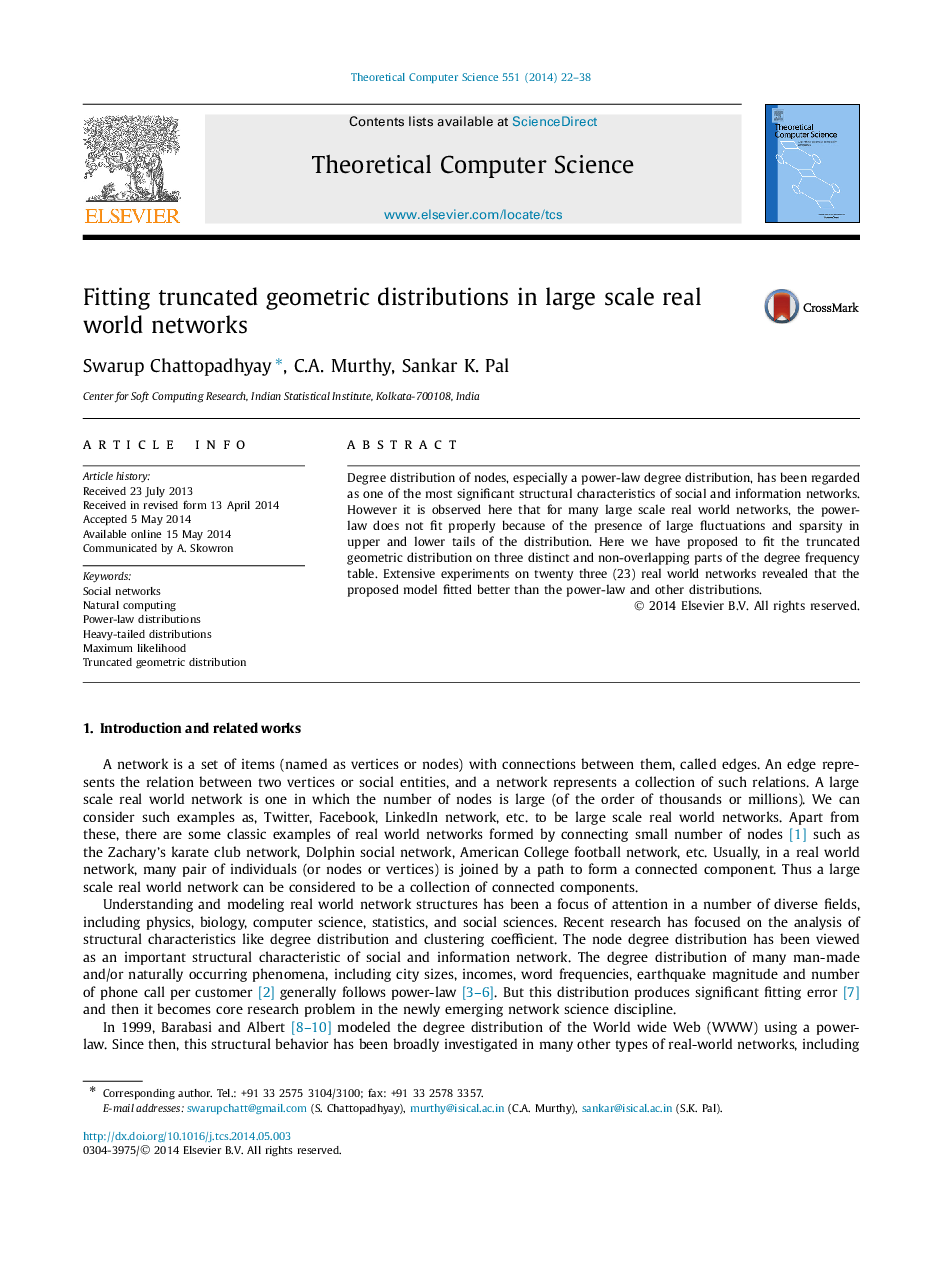| Article ID | Journal | Published Year | Pages | File Type |
|---|---|---|---|---|
| 434233 | Theoretical Computer Science | 2014 | 17 Pages |
Abstract
Degree distribution of nodes, especially a power-law degree distribution, has been regarded as one of the most significant structural characteristics of social and information networks. However it is observed here that for many large scale real world networks, the power-law does not fit properly because of the presence of large fluctuations and sparsity in upper and lower tails of the distribution. Here we have proposed to fit the truncated geometric distribution on three distinct and non-overlapping parts of the degree frequency table. Extensive experiments on twenty three (23) real world networks revealed that the proposed model fitted better than the power-law and other distributions.
Keywords
Related Topics
Physical Sciences and Engineering
Computer Science
Computational Theory and Mathematics
Authors
Swarup Chattopadhyay, C.A. Murthy, Sankar K. Pal,
